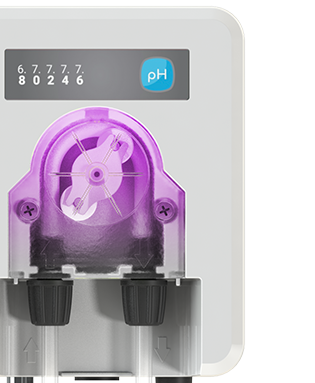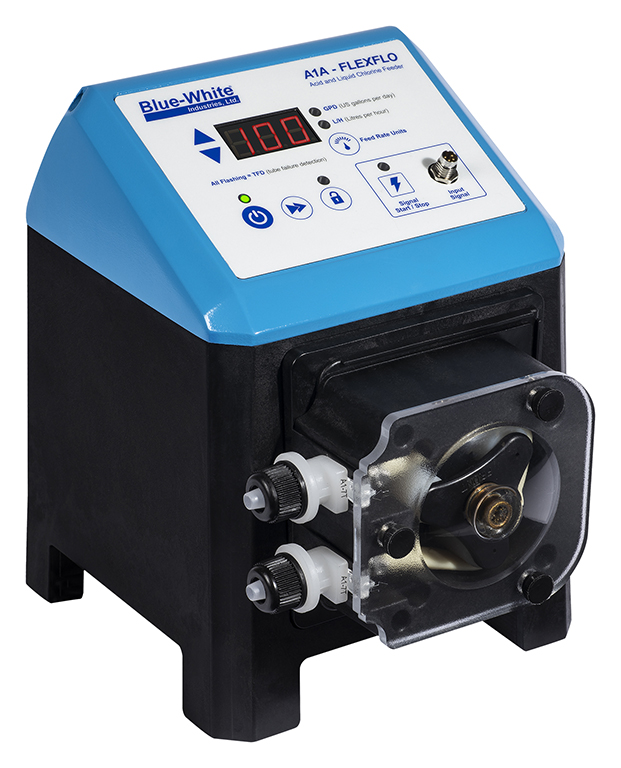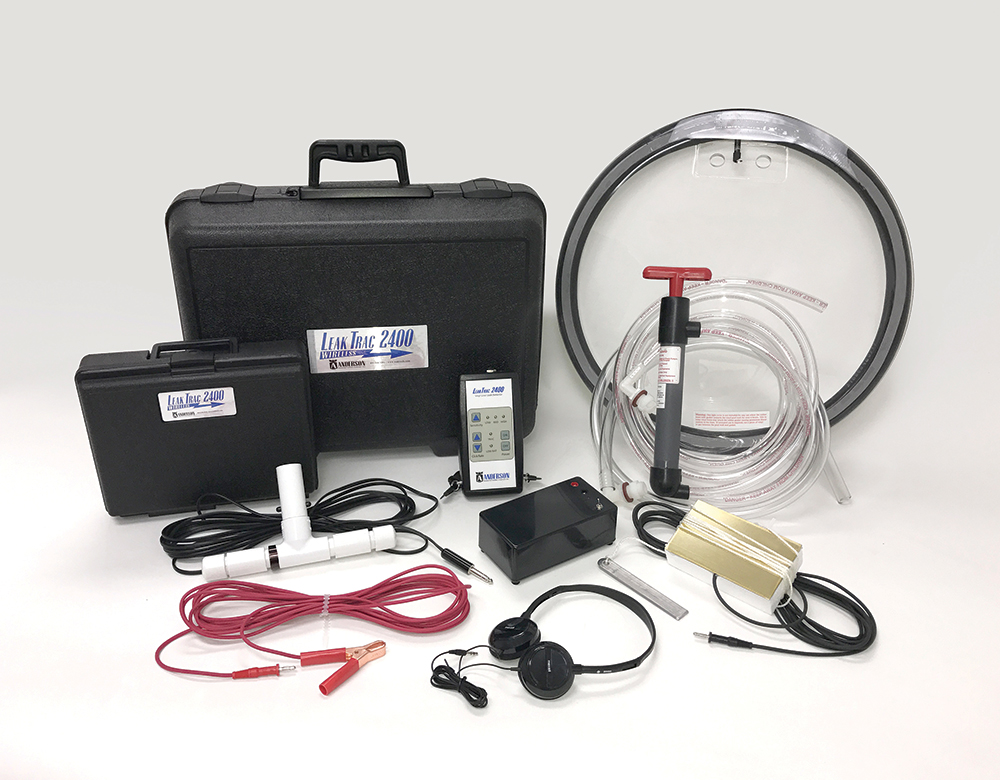Water through the years: One pool pro’s journey from fascination to expertise
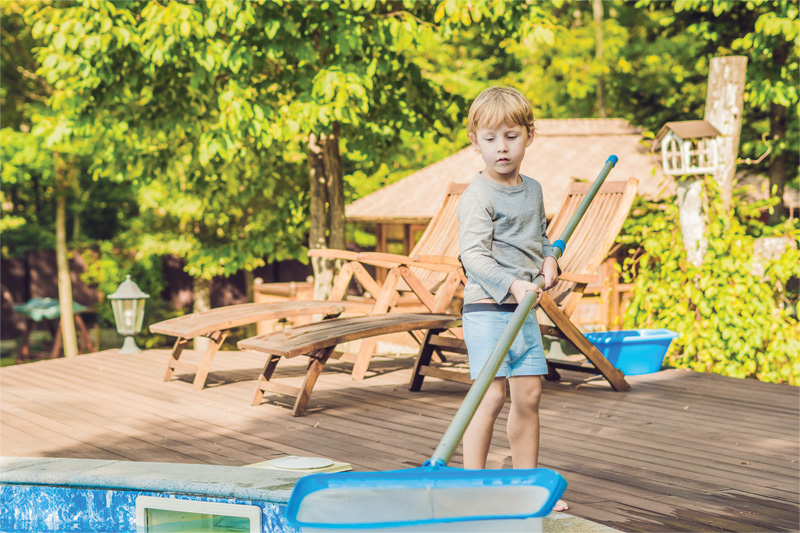
For many, water is a basic necessity—a resource used for drinking, cleaning, or recreation. However, for some, it holds a much deeper significance, shaping experiences, careers, and even personal philosophies. The author’s journey with water began long before he ever serviced his first pool. From childhood moments spent splashing in wading pools to summers by the lake and the rhythmic crash of ocean waves, his fascination with water was more than just a passing interest—it was a calling.
Over the years, this connection evolved from a simple love of being near water to a profound understanding of its adaptability, power, and essential role in nature and human life. His career in the pool industry deepened this relationship and sparked a passion for studying water on a broader scale, from environmental conservation to the science of water movement. This is the story of the author’s lifelong bond with water—how it shaped his path, work, and perspective on the world around him.
My first connections to water
I grew up in a small town in Southern California. We were not close to the ocean or a lake; however, I was fascinated with water from an early age. Some of my earliest memories are splashing in a small wader pool in my front yard. Though not near a beach, we often packed the car with my four other siblings and mom at the wheel and headed for the ocean to escape the summer heat. The sound and feel of the waves were one of my favourite experiences. My family also had a cabin near a beautiful cool lake in the Southern California mountains. We spent weeks there during the summer, mainly at the mountain lake. The lake is where I learned to swim in the glacial water underneath the shining blue skies. It is hard to put these experiences I had into words. I can only say that I was drawn to and loved water.
Pool service
Fast forward to when I was a young man in Southern California looking for a job. A friend of mine invited me to get into the pool service business. My initial interest in servicing pools was the thought that I would be around water all day. At this time, I am not sure I really understood the connection of water to my own life. I only knew that I loved being near or in the water. While cleaning backyard swimming pools was challenging work, being around water helped make it more worthwhile to me.
Learning more about water
As my career continued, I became a lot more involved with water. While servicing swimming pools, I had an innate curiosity about what was really going on with the water and how to treat it best. As a service and retail pool supply store manager, I dealt with owners who continually needed to understand and fix their pool water. Later, I was hired by a specialty chemical company in Seattle, Wash., and the parent company was an environmental water treatment organization. As a result of this, I was exposed to all types of water on a global level. I began studying the relationship between environmental water and swimming pools. I read around 25 books about water, some included in the resources section at the end of this article.
The wonder, malevolence, and adaptability of water
One main concept I learned in my studies was how vital water is to everything and everyone on this planet. I learned about water’s incredible ability to function as a universal solvent, how water has shaped our world and landscape (think about the Grand Canyon), and how water can become a carrier of beneficial minerals and harmful disease-causing microorganisms.
One of my favourite people from history is John L. Snow. He was a doctor who lived during the deadly outbreaks of cholera in Victorian-age London. Dr. Snow is solely responsible for discovering that contaminated water from the river Thames was the culprit for the spread of cholera. He was one of very few in the medical association of the time who suspected that diseases could be carried and spread by water. This breakthrough led to the practice of filtration and chemical treatment of water. The pool industry can thank John L. Snow for the innovations and systems that keep pools safe today. Throughout most of my pool service career, I have seen constant examples of how adaptable and renewable water could be. Transforming a green algae pool back to clear blue exemplifies how adaptable and renewable pool water can be. Water has the amazing ability to wash, cleanse, soothe, carry, disperse, cool, heat, and be eternally renewed. Water never wears out.

Water shortage or misuse?
While there may appear to be water shortages due to droughts, we have always had an equal supply of water on our planet thanks to the hydrological cycle of water evaporating and returning to the earth. The shortages come from water that is polluted, misused, or overconsumed by industries such as industrialized agriculture and big tech.
A recent article in Forbes1 states that the projected water usage of artificial intelligence (AI) processing could reach 6.6 billion m3 (233 billion cf) by 2027. There are 999 L (264 gal) of water in 1 m3 (35 cf). More than 6.44 trillion L (1.7 trillion gal) of water will be used to process this latest technology. The next time we hear swimming pools are responsible for water shortages during drought, think about this. As a pool professional, I realized early on the vital resource that water brings. I have worked throughout my career to educate the proper treatment and best practices that lead to the conservation of water in swimming pools.
How water moves – Leonardo da Vinci
Recently, I read a blog2 by Jim Lauria about Leonardo da Vinci’s connection to water. The most amazing thing about how da Vinci viewed water in nature was his comparison to the human body. He described the flow of rivers as similar to the flow of blood through our bodies.
da Vinci was a genius in his comparison to the microcosm of the human body and the connection to the macrocosm of water throughout the earth. In many ways, before modern swimming pools existed, da Vinci perfectly described the hydrology of water moving through a system of pipes. If we take this analogy further, we can envision the circulation system of a swimming pool as much as that of the human body. The pipes are arteries, the pump is the heart, and the filter acts like the kidneys. Disinfection is the immune system, and chemical controllers are the brain. This analogy of the microcosm and the macrocosm resonates with pool pros because it perfectly describes how water moves through a swimming pool. Also, it sheds light on the fact that a sound swimming pool system must be one in which all the various organs are in good health. da Vinci compared the blocked arteries of a dissected human cadaver to that of rivers with a reduced flow due to a sediment build-up. The best water in a swimming pool is good flow, strong circulation, clean filtration, and proper sanitization. If da Vinci were alive today, he would be a great pool designer and builder. He might design a pool shaped like the Vitruvian Man.
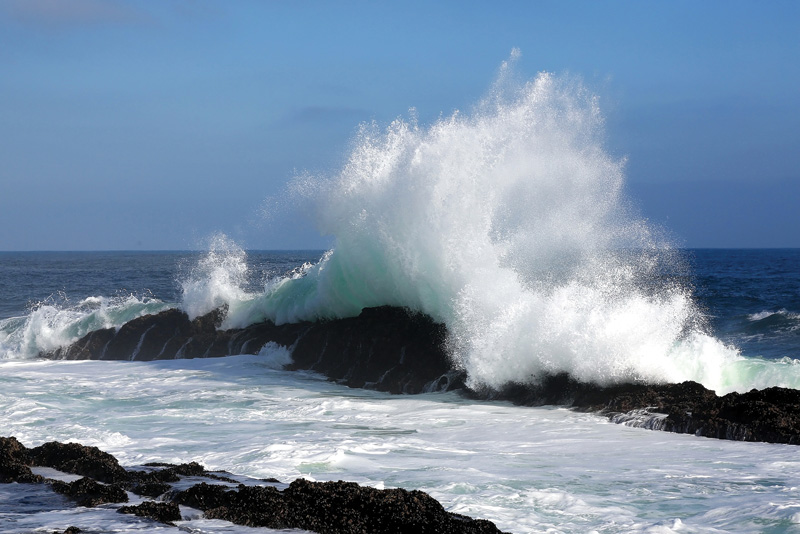
Water must be coaxed
One of the greatest quotes that applies directly to water in swimming pools comes from da Vinci. He stated that “water must be coaxed.” Pool professionals may not have heard this quote, yet instinctively, we know it is true, especially in swimming pools. Water must be managed and properly treated, or the water quality will be challenging. First, water in pools needs proper flow and circulation. There is the right balance, following the proper Langelier Saturation Index (LSI) and treating with chlorine sanitizer to ensure purity and cleanliness.
Water naturally is not always cooperative. It seeks its own balance. It will take from plaster or cementitious surfaces to suppress its appetite for minerals. Water will collect contaminants, bacteria, and viruses from the swimmers and the surrounding environment. In short, water can be chaotic if not properly coaxed into behaving in a way that allows for clear, safe swimming pools. So, we filter the water, balance it according to LSI, and always keep a proper sanitizer residual.
Blue mind
In October 2016, I attended the World Aquatic Health Conference (WAHC) in Nashville, Tenn. The keynote speaker was the best-selling author Dr. Wallace J. Nichols. The inspiring keynote address from Nichols, a marine biologist, was based on research he had conducted with neurosurgeons on the remarkable effects of water on our health and well-being. This valuable information was published in his book Blue Mind. Dr. Nichols discussed proven research and his experiences in and around the water. He concluded that water, in all its forms, has a unique relationship with the human psyche.
One main point is that humans are 70 per cent water, and our brains float in water. There is a strong connection between the water within us (the microcosm) and the water around us (the macrocosm). It is fascinating how much Dr. Nichols says lines up with da Vinci’s claim that water is the force of all life. This enlightened me and made me understand why I felt calm and at peace around the pools I serviced in Southern California. Also, why anytime I was near water, I felt more alive and in tune with all of the surrounding nature. The connection of the microcosm to the macrocosm becomes increasingly palpable as we draw closer to water.
The shape of happy water

Around the same time, I discovered Dr. Nichols’ Blue Mind writings, I also came across another book by a Japanese scientist, Masaru Emoto titled The Hidden Messages of Water. Emoto developed a system of freezing differing water sources from the environment and photographing them through a microscope. What he discovered was unbelievable; he saw that water’s crystal shapes and formation differed based on where the water came from.
Water taken from a pure mountain stream produced a beautifully shaped perfect crystal. However, the water crystal taken from a dam was distorted and misshaped. The scientist took this experiment a step further and began exposing water to different environments and even words. The results were astounding. Water exposed to classical music like Beethoven or Mozart had perfect crystals. However, the crystals were distorted when the water was exposed to heavy metal music (Sorry, all AC/DC fans).
They then did experiments where groups were brought in to say different words such as “love and gratitude” or “you fool.” Some groups would sing peaceful songs, and others would yell hateful words. The water exposed to positive words and emotions resulted in beautiful and perfect crystals, while the water exposed to negative words and emotions was misshaped and distorted. The thesis of this work is published in Emoto’s book, and there are actual photographs of the different crystals under varying conditions. I highly recommend this book to anyone who works in the field of water.
Emoto’s theory is one we all should contemplate. He states that the human body and brain, made up of water, are deeply connected to the surrounding environments. In other words, the water within us could be the driving force behind our emotions and thoughts. One quote from the book that I found connected astoundingly to the water in swimming pools was this, “Water in a river remains pure because it is moving. When water becomes trapped, it dies.” This is absolutely true of water in a swimming pool. When the system in a pool works effectively with proper filtration and chemical treatment, the water looks and feels alive. However, any pool professional can attest that the water looks dull and dead when the filters and pump systems are wrong. Water must move to truly exert its energy and life force.
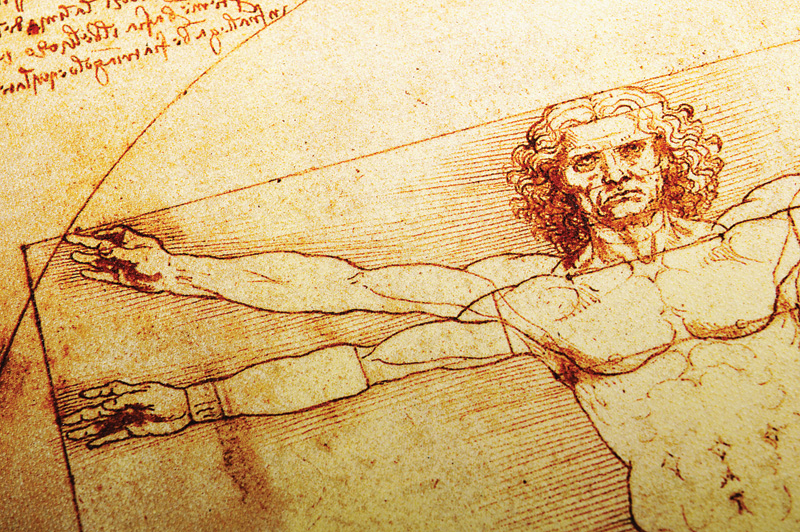
A deeper connection
From my childhood experiences with water to my time servicing pools, I have felt a more profound and greater connection to water. I wonder how many pool professionals have also experienced a deeper connection to water. Have you experienced a connection to water in the pools you service or the environment, such as the ocean or a river? Water is the most essential element on earth, but it still has a mystery and aura that is difficult to explain. Yet so much information exists that we, as human beings, have a deep connection to water. In our thoughts, emotions, and even spiritually, water speaks to us and causes us to wonder about life and the universe. I have experienced an amazing connection to water throughout my life’s journey, and it continues to this day. Water still amazes, confuses, and fascinates me.
Notes
1 Gordon, Cindy. 2024. “AI Is Accelerating the Loss of Our Scarcest Natural Resource: Water.” Forbes, February 25, 2024. forbes.com
2 Lauria, Jim. 2024. “What the Ken Burns Documentary on Leonardo da Vinci Reminded Me About the Power of Water and Curiosity.” To Know Water Is to Love Water, December 11, 2024. toknowwateristolovewater.com
Resources
- Fishman, Charles. 2011. The Big Thirst: The Secret Life and Turbulent Future of Water. Free Press.
- Wick, Walter. 1997. A Drop of Water. Scholastic Press.
- Sedlak, David. 2014. Water 4.0: The Past, Present, and Future of the World’s Most Vital Resource.
Yale University Press. - Egan, Dan. 2017. The Death and Life of the Great Lakes. W.W. Norton & Company.
- Morris, Robert D. 2007. The Blue Death: Disease, Disaster, and the Water We Drink. Harper.
- Nichols, Wallace J. 2014. Blue Mind: The Surprising Science That Shows How Being Near, In, On, or Under Water Can Make You Happier, Healthier, More Connected, and Better at What You Do. Little, Brown, and Company.
- Emoto, Masaru. 2005. The Hidden Messages in Water. Beyond Words Publishing.
- McGuire, Michael J. 2013. The Chlorine Revolution: Water Disinfection and the Fight to Save Lives. American Water Works Association.
- Salzman, James. 2012. Drinking Water: A History. Overlook Press.
- Glennon, Robert. 2009. Unquenchable: America’s Water Crisis and What to Do About It. Island Press.
Author
Terry Arko is a product training and content manager for HASA Pool Inc., a manufacturer and distributor of pool and spa water treatment products in Saugus, Calif. He has more than 40 years of experience in the pool and spa/hot tub industry, working in service, repair, retail sales, chemical manufacturing, technical service, commercial sales, and product development. He has written over 100 published articles on water chemistry and has been an instructor of water chemistry courses for more than 25 years. Arko serves as a voting member on the Recreational Water & Air Quality Committee (RWAQC) board. He is a Commercial Pool Operator (CPO) course instructor, a Pool Chemistry Certified Residential course teacher for the Pool Chemistry Training Institute (PCTI), and a Pool & Spa Marketing Editorial Advisory Committee member. Arko can be reached at terryarko@hasapool.com.


